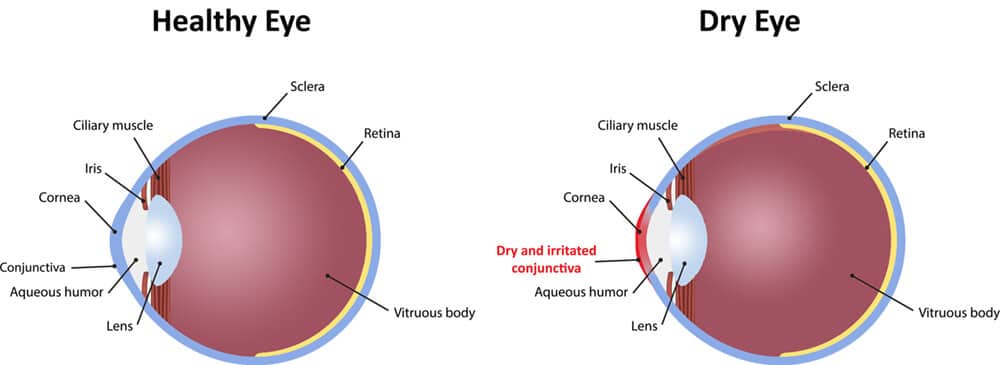
At Clarity Eye Center, we provide a comprehensive approach to the disruptive and life-altering condition of Dry Eye Disease. From state-of-the-art technology to help determine why your eyes and vision are affected to creating customized treatment plans specifically for you, we strive to help you overcome the daily frustration and discomfort of your dry eye disease, even if you have suffered for years!
Significant advances have occurred in our understanding of dry eye and ocular surface disease. These advances have helped create enhanced ways to help dry eye sufferers and allow dramatic improvements in comfort and quality of life. This website contains a tremendous amount of up to date information and perspective regarding this condition. We encourage you to read through it and discuss any questions at your consultation.
Our Dry Eye Center Services Include:
- Intense pulsed light therapy
- Thermal gland expression
- Lid and lash cleaning
- Amniotic membranes
- Over the counter treatments
- Autologous serum tears
- Immunomodulatory therapy
During your visit our providers will recommend the combination of treatment right for you.
What is Dry Eye Disease?
Dry Eye Disease is a condition caused by an unstable tear layer on the surface of the eye. Unstable tears lead to discomfort (including burning, excess reflex tearing, scratchiness/grittiness) and can cause increased blurring of your vision. The tear layer consists of 3 main components: oil, water and mucus. Each component is created by different parts of the eye and eyelids. The thin MUCUS layer is created by cells on the eye surface, the thick WATER layer is created by the lacrimal gland located under your upper eyelid near your outer eyebrow region and the OIL layer is created by many meibomian glands that line the upper and lower eyelids. Each component is essential and important. Any disruption in the creation or maintenance of each layer can cause the tears to become unstable and evaporate away from the front surface of the eye rapidly.

Meibomian gland dysfunction, inflammation of the tears and eyelids, blepharitis, ocular rosacea, various systemic inflammatory conditions, eyelid changes with age, nutritional deficiencies and increased use of technological devices are all possible contributing factors that cause increasing dry eye symptoms.
Basic daily care of the eyes and eyelids may be enough to control dry eye disease for some but others may require more extensive treatments including daily topical medications as well as various types of thermal pulsation procedures that can help empty the meibomian glands and give them a chance to become healthier over time. It is imperative that no matter what treatment plan is discussed that you follow through on a daily basis to increase the health of your eyes.


